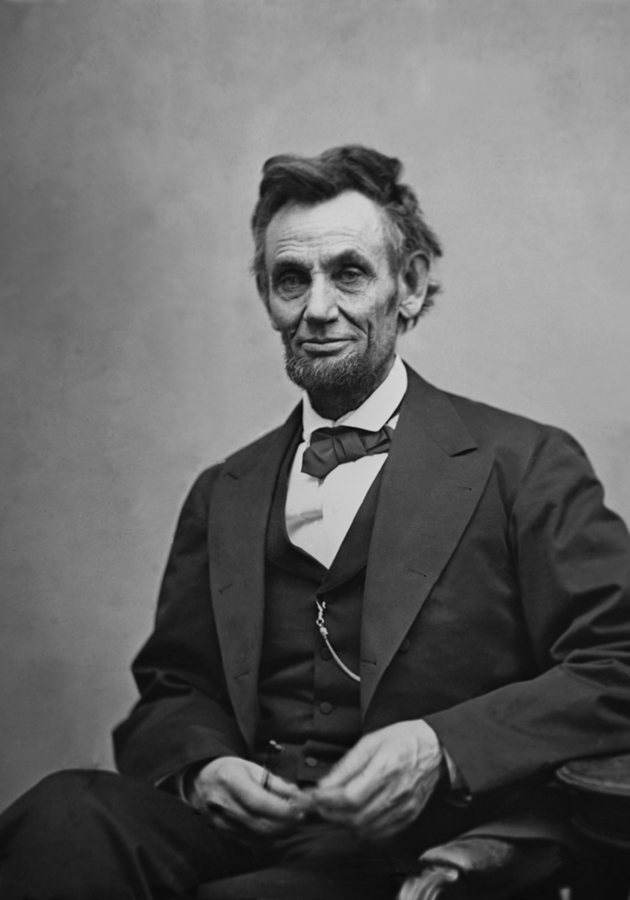Buried in an unmarked grave, Henrietta Lacks was a poor Southern tobacco farmer who died aged 31 in 1951. Her cells, however, are still alive: taken without her knowledge (or the knowledge of her children), they are the “first immortal human cells ever grown in a laboratory.” And they have helped us understand the nature of numerous diseases while leading to the discovery of countless vaccines and cures.
So, get ready to join Rebecca Skloot on her journey to uncover who Henrietta Lacks was, and prepare to learn why her story is “inextricably connected to the dark history of experimentation on African Americans.”
Henrietta Lacks: an ordinary life (1920 – 1941)
Henrietta Lacks was born Loretta Pleasant in Roanoke, Virginia, on August 1, 1920. Nobody knows how and when she became Henrietta – but, not that long after her birth, people started referring to her by her nickname: Hennie. When she was four, her mother died while giving birth to her tenth child. Her father wasn’t someone with enough patience to raise a child (let alone 10), so when his wife died, he took all of his children back to Clover, Virginia, “where his family still farmed the tobacco fields their ancestors had worked as slaves.”
Of course, nobody in Clover could afford to take all of the children, so the siblings were split among relatives. Henrietta ended up with her grandfather, Tommy Lacks, who was already raising another grandchild left by one of his daughters: Henrietta’s cousin David “Day” Lacks, five years older. No one could have guessed back then that Henrietta would spend the rest of her life with Day: first growing up alongside him as a playmate and cousin, then as his wife and the mother of his five children.
Henrietta was only 14 when she gave birth to the couple’s first son, Lawrence, and a little over 18 when she brought to the world Elsie, mentally disabled. Two years later, on April 10, 1941, Henrietta and Day married in a humble ceremony at their preacher’s house. On the very same day, a cousin of Henrietta – called “Crazy” Joe because he was crazy in love with Hennie – stabbed himself in the chest with a dull pocket knife. This wasn’t his first attempt to kill himself because of his unrequited love. In Clover, Henrietta was widely admired for her beauty.
Henrietta Lacks: an ordinary death (1941 – 1951)
Henrietta and Day married just a few months before Japan’s attack on Pearl Harbor, an event that unexpectedly changed the lives of many African Americans working at the Bethlehem Steel’s Sparrows Point steel mill, located about 250 miles (402 kilometers) to the north of Clover. During World War I, the increasing demand for steel made the plant one of the largest in the world and caused a surge of migrations from the farms of Virginia and the Carolinas. “Bethlehem Steel was a gold mine in a time flush with poverty,” writes Skloot, “especially for black families from the South.” By 1941, there were so many black people working at the steel plant that they had practically built a city for themselves – Turner Station, “a small community of black workers on a peninsula in the Patapsco River, about twenty miles from downtown Baltimore.”
One of these workers was Fred Garrett, a cousin of Hennie and Day. Soon after Pearl Harbor, he traveled from Baltimore to Clover to convince them that they should follow his example. The very next morning, Fred bought Day a bus ticket to Baltimore, and after a few months, Henrietta also moved to Turner Station. Day was soon after drafted, but, with some help from Fred, he was able to buy his wife and their children a house. In Maryland, the couple would have three more children, all born after the war: David (also known as Sonny), Deborah, and Joseph (later known, just like one of his uncles, as “Crazy” Joe).
Not long after Joe was born, a gynecology exam at Johns Hopkins Hospital – the only hospital in the area that treated black patients at the time – discovered a lump on Henrietta’s cervix. On February 5, 1951, a few days after receiving the biopsy results, Henrietta’s doctor, Howard W. Jones, told her the diagnosis over the phone: “epidermoid carcinoma of the cervix, Stage I.”
All treatment for invasive cervical carcinomas at the time was with radium, and Henrietta’s wasn’t the exception. However, since radium is a highly radioactive metal, the treatment caused severe burns and immense pain for the unfortunate patients. Be that as it may, it sometimes worked. Not in this case: on October 4, 1951, just a few months after it had been discovered, the aggressive cancer claimed the life of Henrietta Lacks.
The birth of HeLa: “It’s alive” (1951)
Now, most stories would end there. However, the story of Henrietta Lacks is not like most stories, it is a unique one – just like her cells. Allow us to rephrase that: Henrietta’s story is unique because of her unique cells.
And it started with George Otto Gey, the head of tissue culture at Johns Hopkins, developing a method to keep cells alive for a longer period of time, the so-called roller-tube technique. However, even with the help of this technique, cells cultured for laboratory studies could survive only a few days at the most – not long enough to endure a variety of tests. Gey, however, noticed something strange in the case of Henrietta: her cancerous cells seemed to have reproduced at such a high rate that, theoretically, they could have been kept alive for months or even years.
With this in mind, Gey asked his lab assistant Mary Kubicek to use the roller-tube technique and take some samples from Henrietta’s cervical cells. Even though Kubicek wasn’t as optimistic as Gey, she did just that, putting the cell cultures in tubes marked HeLa, using Henrietta’s first and last name first two letters. A few days later, Gey and Kubicek were shocked to learn that not only were the “HeLa” cells alive but that they had also multiplied beyond the team’s wildest expectations: doubled in number day by day. It was a monumental event. And it wasn’t long before George Gey proudly announced to the world that he had produced the “first immortal human cells ever grown in a laboratory.”
The immortal life of Henrietta Lacks (1951 – 1988)
Because of their ability to rapidly reproduce (and be continually tested), everybody knew that the HeLa cells would lead to numerous significant breakthroughs in biomedical research. So, not long after Henrietta’s death, “a massive operation that would grow to produce trillions of HeLa cells each week” was started – the building of a HeLa factory, the first-ever cell production facility. It’s difficult to compute how many HeLa cells have been produced since. According to some estimates, if piled onto a scale, they’d weighed more than 50 million metric tons – a fascinating number because when she died, Henrietta weighed less than 90 kilograms (200 pounds).
Anyway, the HeLa factory was built in 1951 for one reason: to help stop polio. And, indeed, it was Henrietta Lacks’ cells that Jonas Salk used to develop the polio vaccine. Moreover, Chester Southam, a leading virologist at the time, started injecting HeLa cells into terminally ill patients and even healthy prison inmates to see if a such vaccine could be developed against cancer.
Before too long, HeLa cells became famous: not only were they mailed around the globe to countless researching laboratories, but they also earned feature stories in newspapers. Most of them got the name of their originator wrong, calling her anything from Henrietta Lakes to Helen Lane. It seemed like nobody cared about the woman whose cells everybody was using.
This was the impression Rebecca Skloot, the author of this book, got in 1988, during a community college biology class. She was 16 then and was fascinated to hear from her instructor Donald Defler just how important to medical research were these HeLa cells.
Defler told the class that they helped “develop drugs for treating herpes, leukemia, influenza, hemophilia, and Parkinson’s disease,” and that they’ve been used “to study lactose digestion, sexually transmitted diseases, appendicitis, human longevity, mosquito mating, and the negative cellular effects of working in sewers.”
“HeLa cells were one of the most important things that happened to medicine in the last hundred years,” Defler concluded, adding, almost as an afterthought, that they had come from a black woman named Henrietta Lacks. Even though Skloot tried to find out something more about her, she couldn’t: it seemed as if practically nobody knew anything about Henrietta.
“All that’s my mother”: Rebecca Skloot’s investigation (1988 – 2017)
Believe it or not, even Henrietta’s family didn’t know enough. It was in the 1970s that they first discovered that the cells of one of their relatives were inside the bodies of countless individuals – and have been used by millions of scientists for decades. And it happened only because it was noticed by some researchers that a large portion of cell cultures had become contaminated by the ubiquitous HeLa cells. To differentiate between them and other cell lines, all kinds of scientists started contacting Henrietta Lacks’ immediate family for DNA samples. Unsurprisingly, her children started suspecting something. The reason why they couldn’t put two and two together immediately was rather simple: nobody in their family had ever discussed their mother’s illness with them.
When one of Henrietta’s daughters, Deborah, found out what had been happening before their very eyes, she was amazed and flummoxed, not to mention alarmed and frightened. After all, it was no secret that numerous medical breakthroughs had been the result of unethical testing practices on black people – most infamously, the 40-year-long Tuskegee experiment, during which 600 African American men weren’t treated for syphilis with penicillin just so that researchers could see what would happen to them in the long run.
Cases such as this had led to the formation of several myths among African Americans that talked of white “night doctors” kidnapping impoverished black children and women to do medical experiments on them. It was for reasons such as this that Deborah was suspicious of Skloot when the author contacted her hoping to find out more about her mother. Eventually, however, Skloot got her trust and gathered just enough material to tell Henrietta’s story.
But not even that made life more bearable for Deborah or Henrietta’s other children, who have never received anything in return for their mother’s cells. “I always have thought it was strange,” said Deborah in an interview., “if our mother cells done so much for medicine, how come her family can’t afford to see no doctors? Don’t make no sense. People got rich off my mother without us even knowin’ about them takin’ her cells, now we don’t get a dime. I used to get so mad about that to where it made me sick and I had to take pills. But I don’t got it in me no more to fight. I just want to know who my mother was.” And thanks to Skloot, she finally knew before dying in 2009.
Final Notes
Adapted in a major HBO movie starring Oprah Winfrey and Rose Byrne, “The Immortal Life of Henrietta Lacks” is a well-researched, gripping and immensely moving account of the life and afterlife of an unjustly forgotten woman.
And even though it’s a work of nonfiction, it reads like a novel. Undoubtedly, one of the most important and best books of the 2010s.
12min Tip
No matter how unimportant it might seem at first sight, in the vast scheme of things, every life matters tremendously. Henrietta Lacks is evidence enough. Don’t forget this.





























